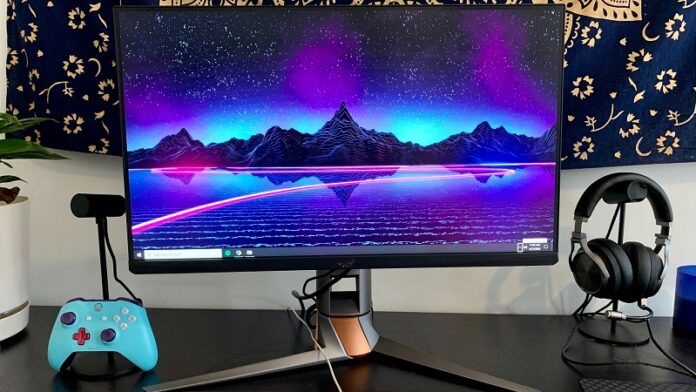Being a gamer, your hardware affects your gaming experience to a great degree.
For you to get the most out of the latest gaming software, you will not only need a gaming PC with powerful graphics options and a higher CPU but will also need a monitor that can fully utilize the said orientation. By the way, check quality monitors here at Office Consumer.
Below are the factors to consider when choosing a monitor for the optimum performance of your gaming life.
Whether you are a hardcore gamer or just an occasional gamer, you need the very best gaming experience you can afford to get. There is this difficulty many gamers encounter when choosing a monitor for gaming. It is quite tricky getting the best when you don’t know what to look for. To avoid this, concentrate your premium attention on every detail of this post.
Resolution
Resolution is at the top of the specification chain. The higher the screen resolution, the clearer the details. Also, the more pixels you can pack into your monitor, the better the display quality and resolution.
Below are the types of resolution available;
- HD or HD-ready resolution (720p) – 1280 x 72.
- FHD or Full HD resolution (1080p) – 1920 x 1080.
- QHD or Quad HD resolution (1440p) – 2560 x 1440.
- UHD or Ultra HD or 4K (2160p) – 3840 x 2160.
Of all the above, the very best resolution is the Quad HD resolution. This is mostly found in many gaming dedicated monitors. It is sharper than Full HD and puts a lesser strain on the graphics in comparison with Ultra HD. Typically, bigger may sometimes not necessarily mean better.
Screen Size
As said above under resolution, bigger doesn’t always equal better. Most of the time, many people think going for the big monitor will be effective for their gaming experience, but heck no, it can make it worse.
You need to consider the pixel density of the monitor. This is the pixel-per-inch ratio of the monitor screen size and resolution.
If the monitor has a low pixel density, it will affect the image quality. This will result in limited screen space and a lack of details. While on the other hand, if the monitor comes with a higher pixel density, there will be a lot of screen space and details but you will need to scale up the monitor display to be able to read small texts.
The ideal best screen size for a gaming monitor should be 27″. This is not too large and not too small either. But you can go for your choice (between 24″ – 35″), provided you consider the resolution as well as the pixel density.
Refresh Rate
This is largely how fast the monitor can refresh the screen per second. It is measured in hertz (Hz).
Higher refresh rates will benefit you as a gamer but not so high as to lead to jump-starting images on the screen. The bearable minimum for refresh rate is 60Hz while 144Hz displays monitor are considered the best due to fast and responsive refresh rate. A 240 Hz display is considered extreme and may likely not serve the intended purpose.
Understand that you will need a powerful gaming system to enjoy the best of this gaming monitor.
Response Time
Response time refers to how fast it takes a pixel to change from one setting to the other. It is usually measured in milliseconds (ms) from one shade of gray to another (which is in GtG). While 5 ms may be recommended for a gaming monitor, going down to as lower as 1ms can be quite enjoyable.
Response time is quite important as during a motion scene, the faster the screen can go the more decisive the result of the game tends to be. A slow response time will lead to motion blur or ghosting as the monitor is found to be lagging and not keeping in touch with the gaming system.
Adaptive Sync
Frame rates often time fluctuate during gaming depending on the actions of the screen. In minimal action, the frame rates tend to shoot up while in high action, they can drop drastically. This results in what is called screen tearing.
Screen tearing is the situation where the monitor display a part of one frame and the following frame at the same time. This results in a split image where sync is broken. This is because the refresh rates set don’t align with the received frame data from the system setting.
Below are the three types of Adaptive sync available;
- VSync – very simple. Tells the monitor to wait for the entire next frame before switching. This may not be perfect as it can cause lag. And for a fact, lag is very bad for gaming.
- AMD FreeSync – widely available and very cheap to implement. Developed adaptive sync or variable refresh rate solution which helps monitors maintain smooth playback.
NVIDIA G-Sync – the very advanced adaptive sync. More expensive than the other as it requires quality control and certification in ensuring guaranteed performance.
Must Read : NVIDIA Control Panel Download ( 2021 Latest ) For Windows 10,8,7



































































